Riparian Restoration Projects
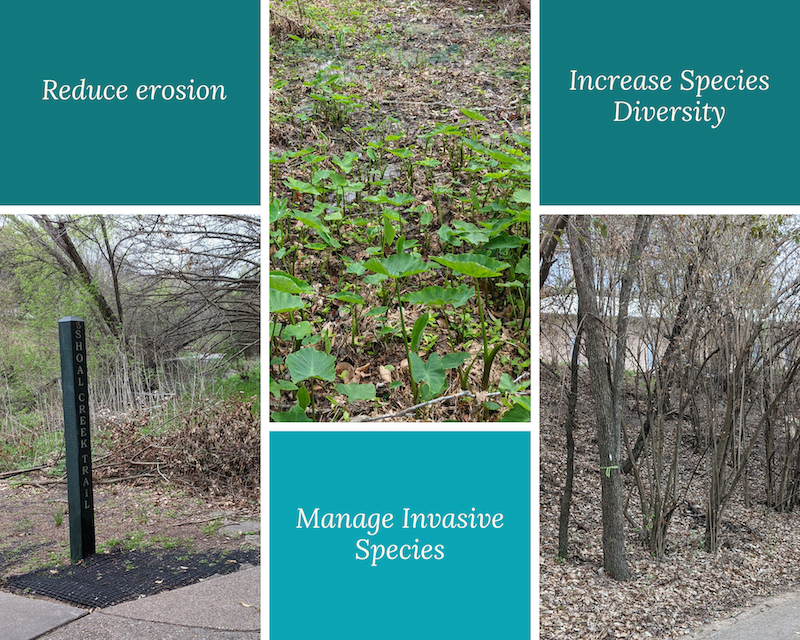
Seiders Springs Park
In support of the Shoal Creek Watershed Action Plan, Shoal Creek Conservancy is conducting a riparian restoration project in Seiders Springs Park to address common issues seen along Shoal Creek and throughout the watershed. Ecological restoration along the creek expands and improves its riparian buffer zones which helps to improve water quality, halt erosion, and restore native habitat. From September 2021 to May 2022, this project began in partnership with the Junior League of Austin, but after June 2022 is supported by public volunteer workdays.
Goals
- Reduce erosion by mulching & seeding bare soil and installing a stilling basin
- Remove/girdle invasive species, including elephant ear, Johnson grass, and Ligustrum
- Increase species diversity by planting Texas natives (sedges, saplings, and seedballs)
Efforts & Progress
9/18/2021 Ligustrum girdling workday.
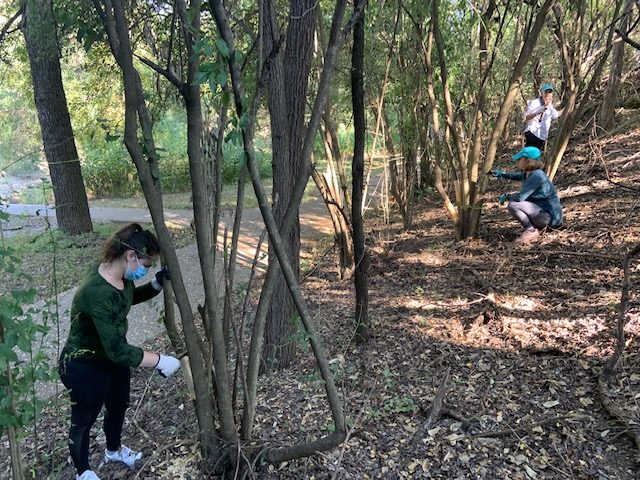
10/30/2021 Elephant ear & Johnson grass removal workday. Johnson grass was replaced with native gamma grass and switch grass.
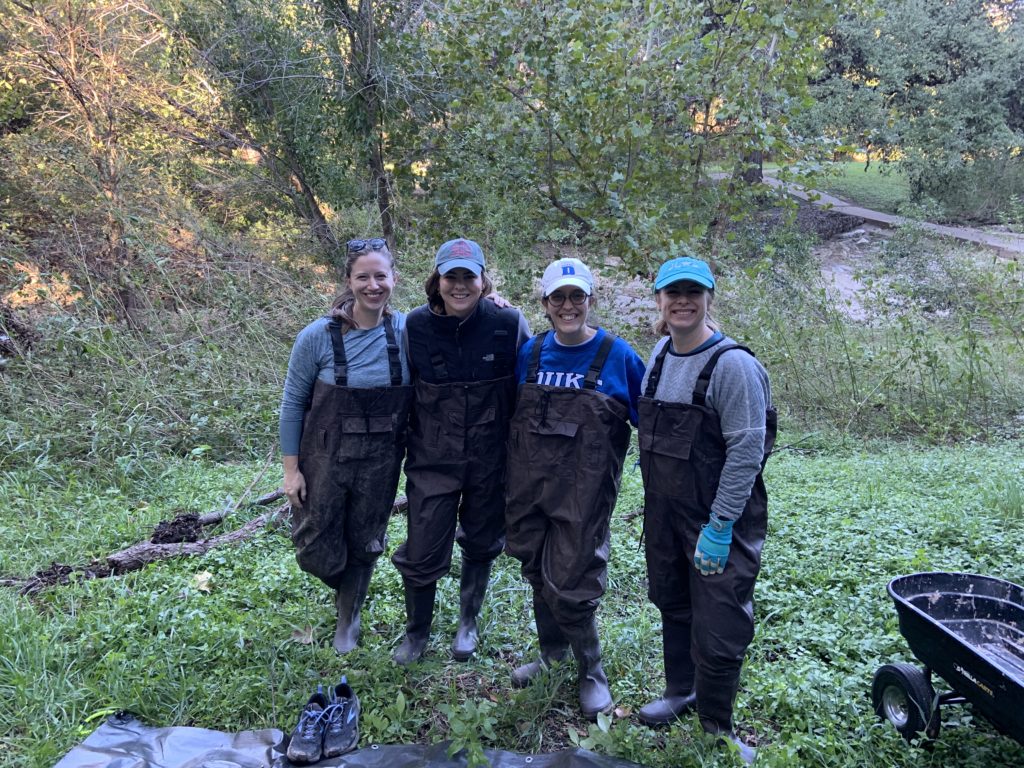
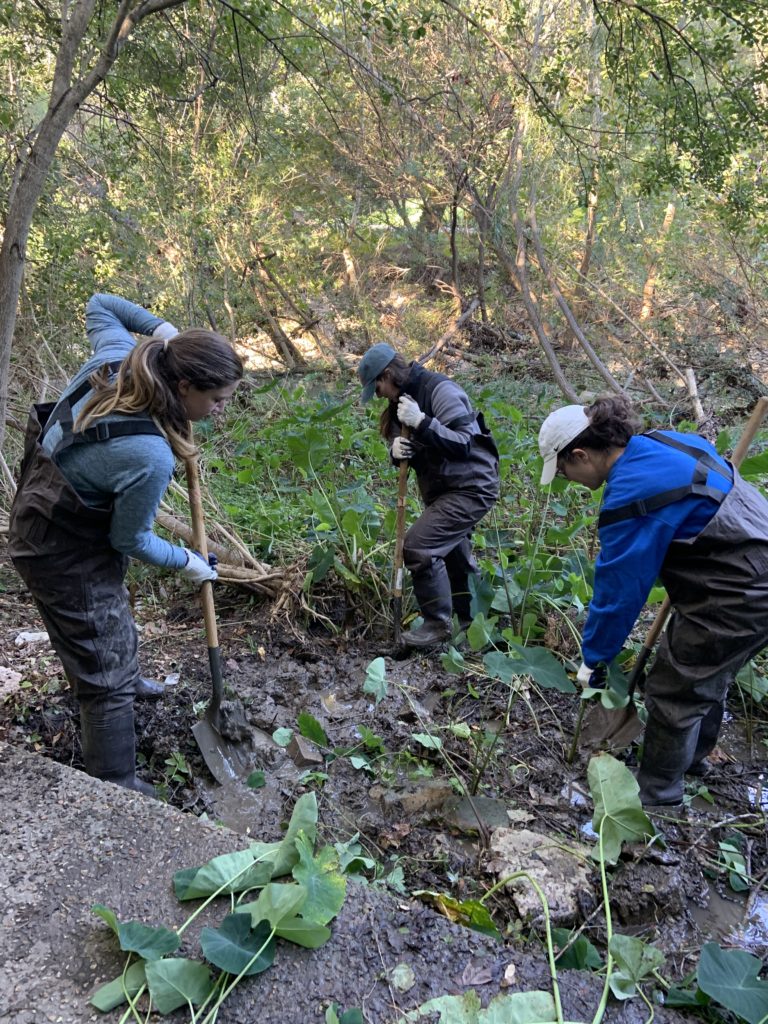
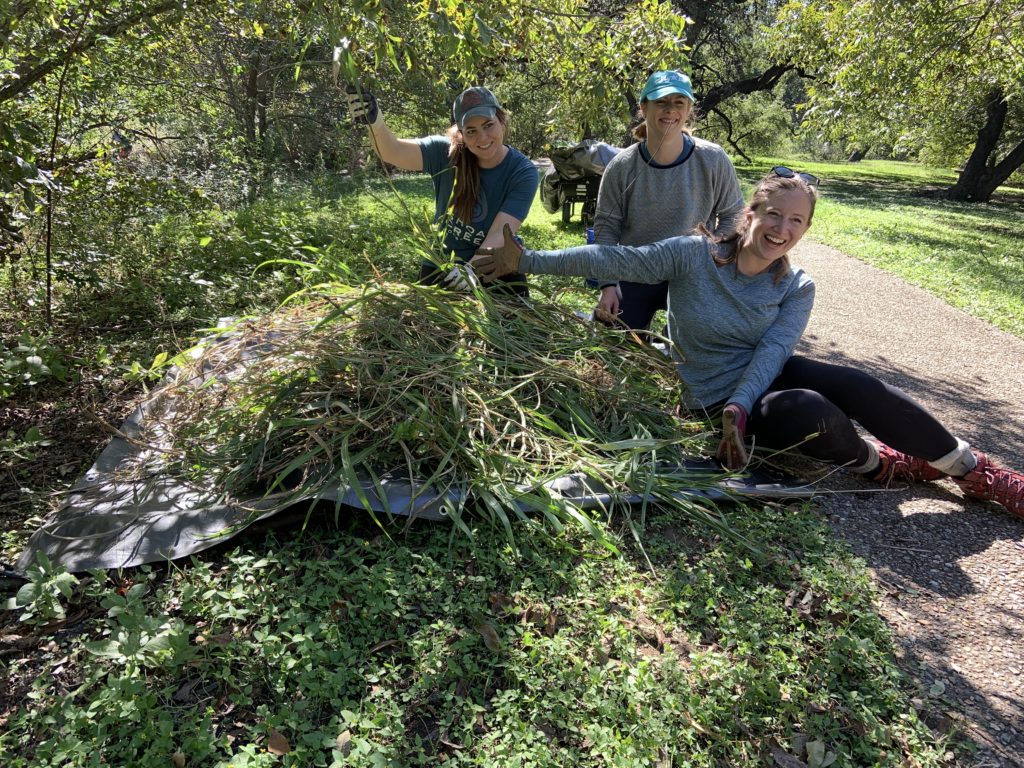
11/13/2021 Elephant ear removal followed by planting Emory sedge, jumping sedge, spikerush, horsetail reed, and blue mistflower. We will continue to add native species to this site and manage any elephant ear that re-sprouts.
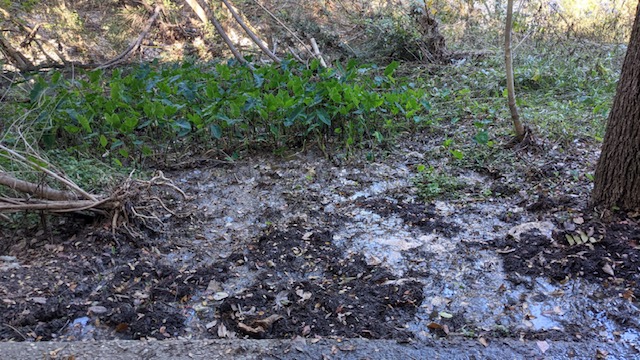

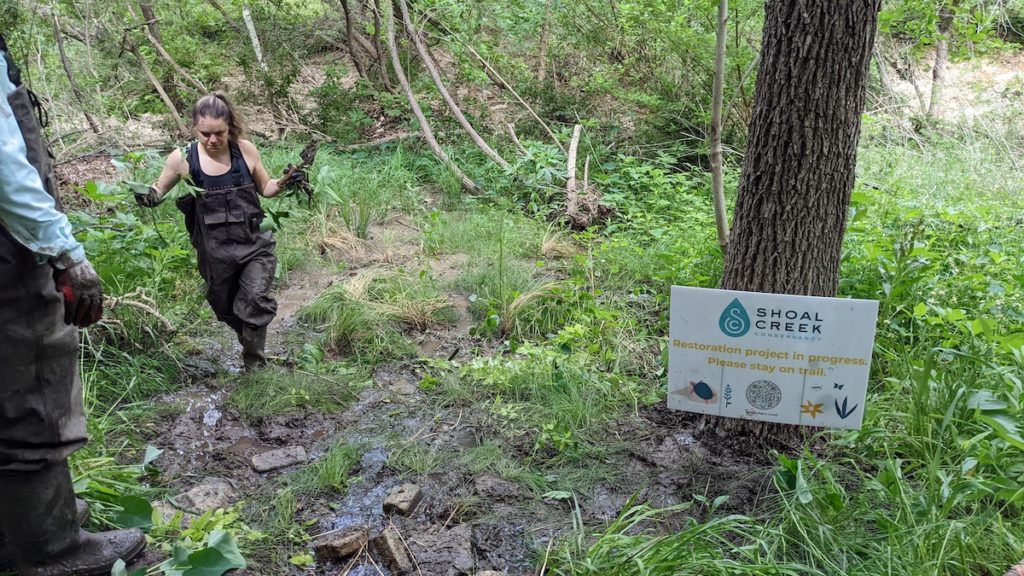
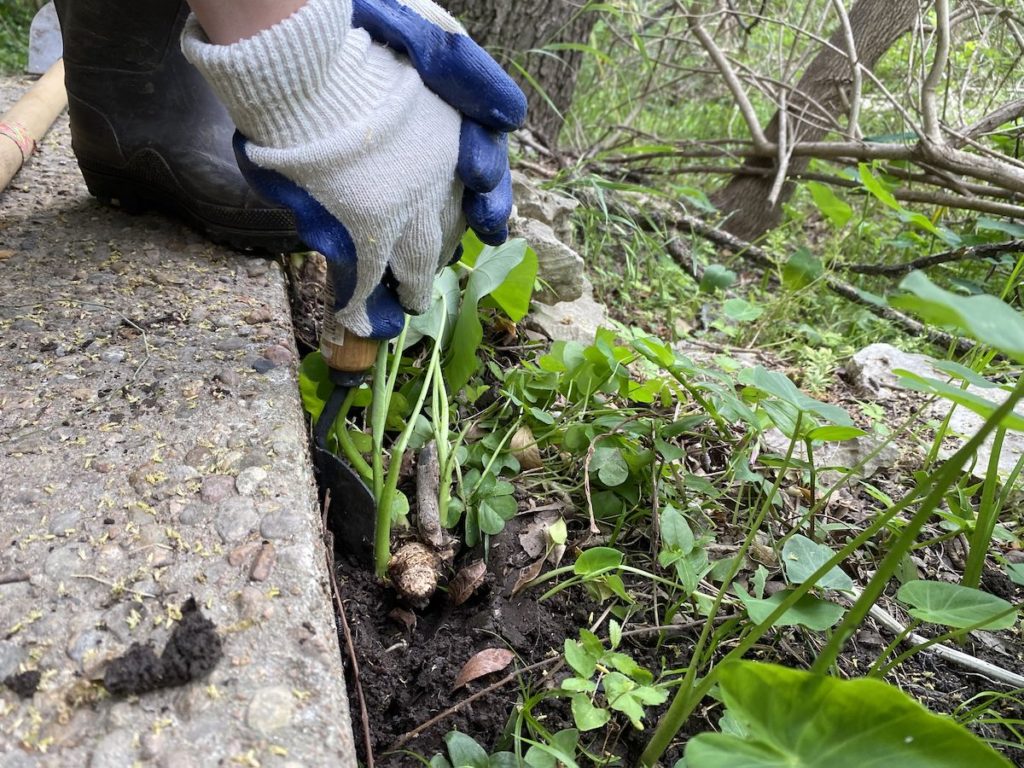
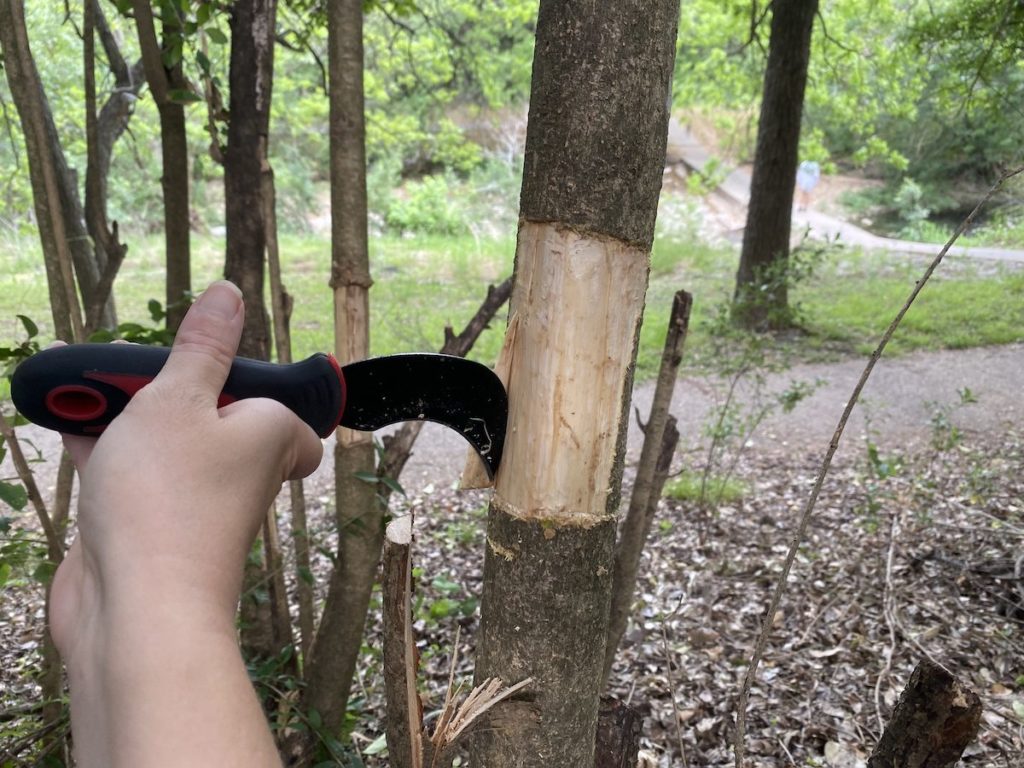
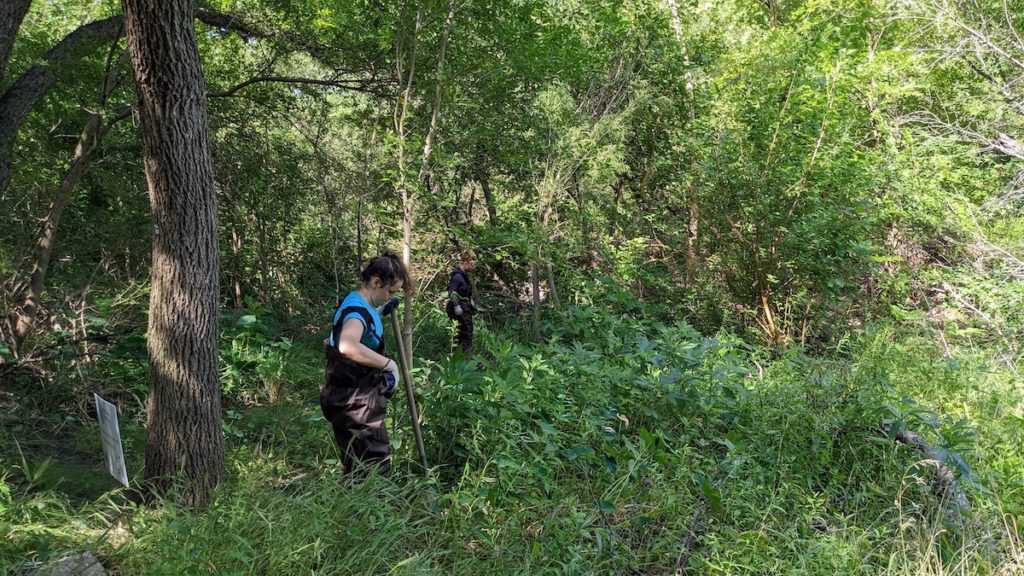
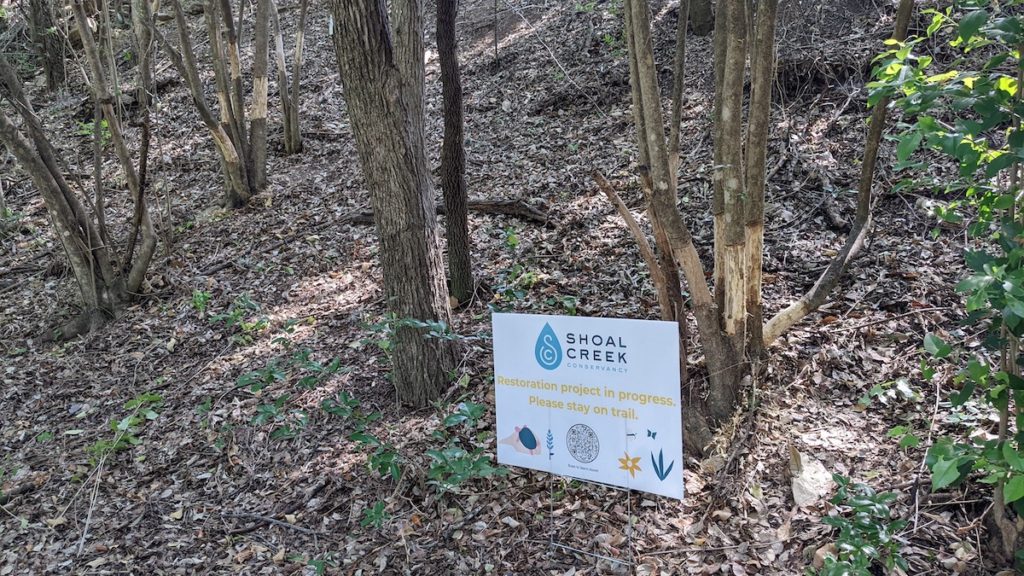

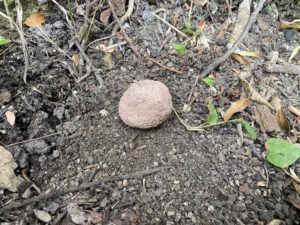
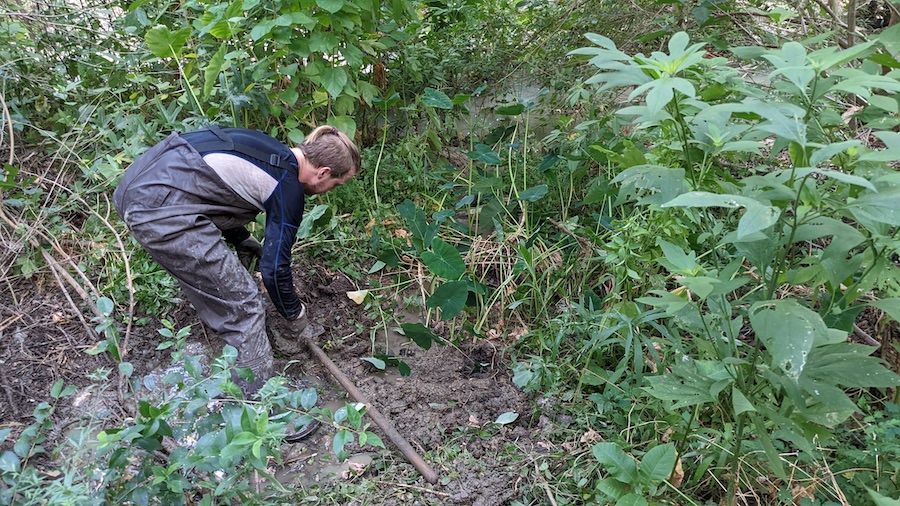
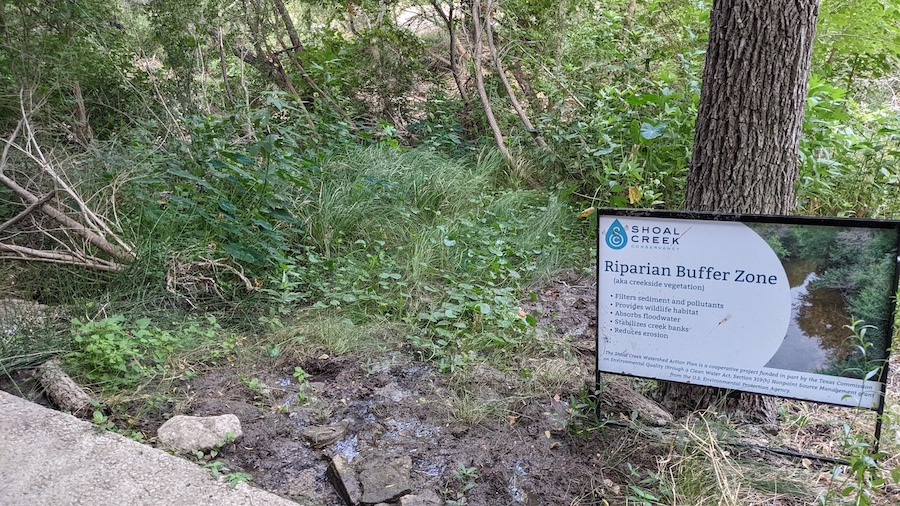
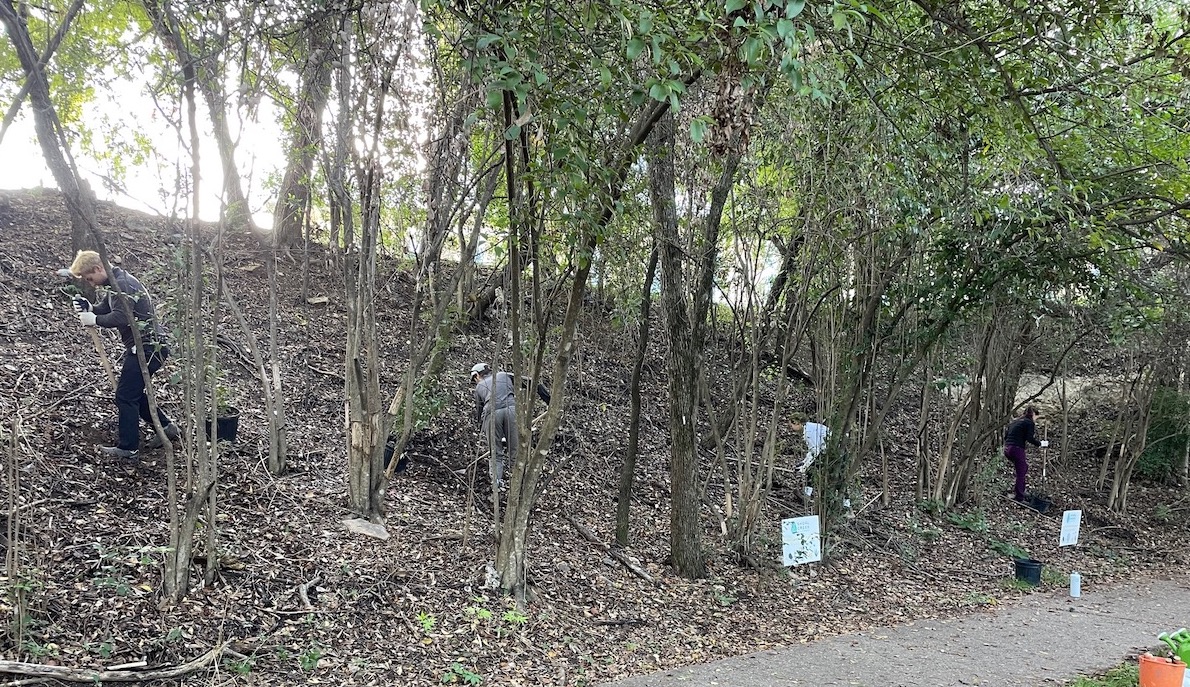
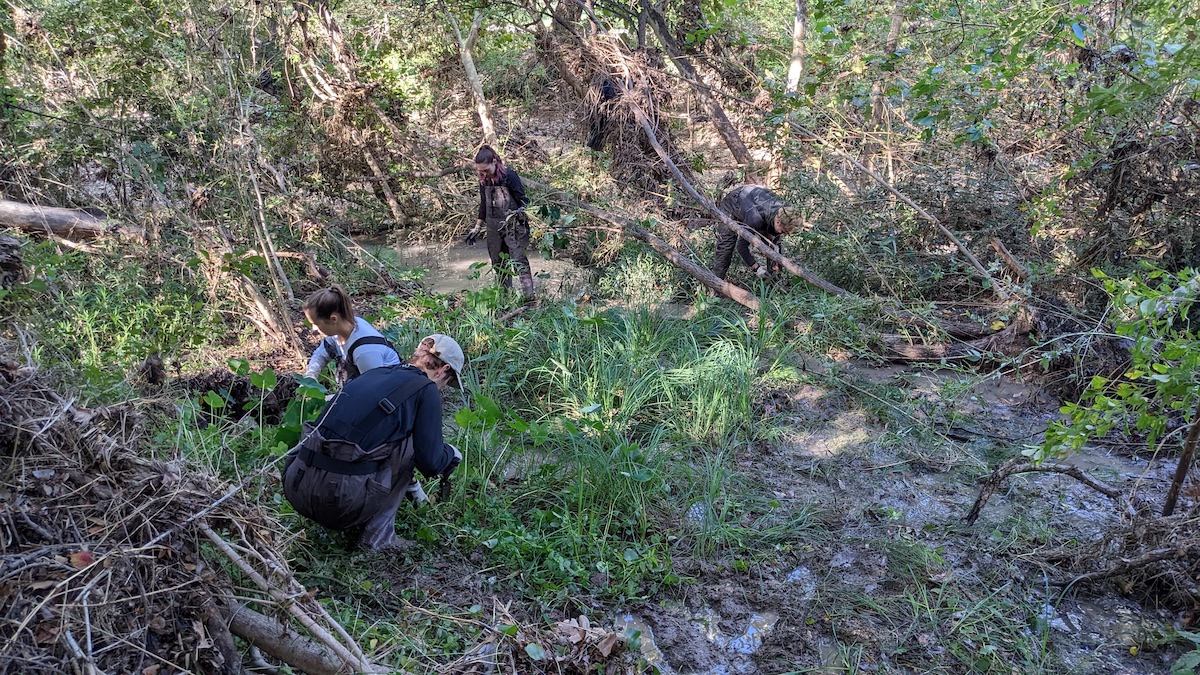
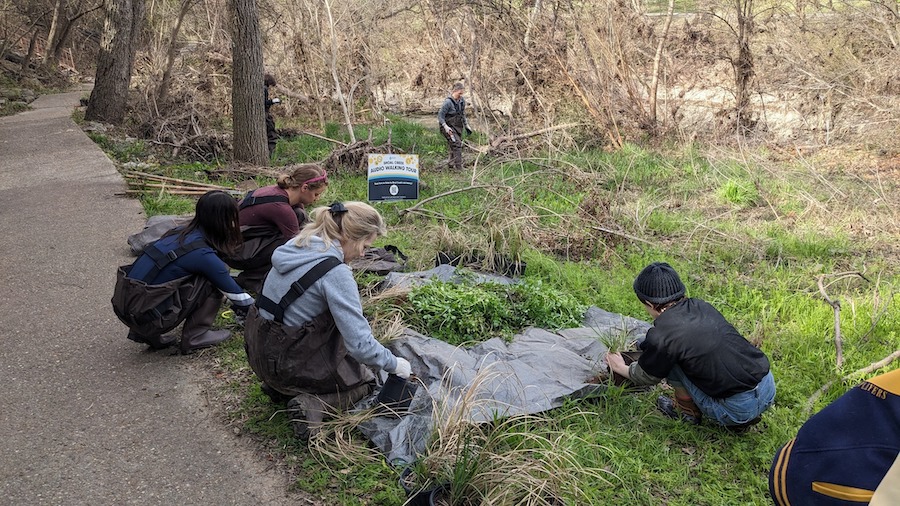
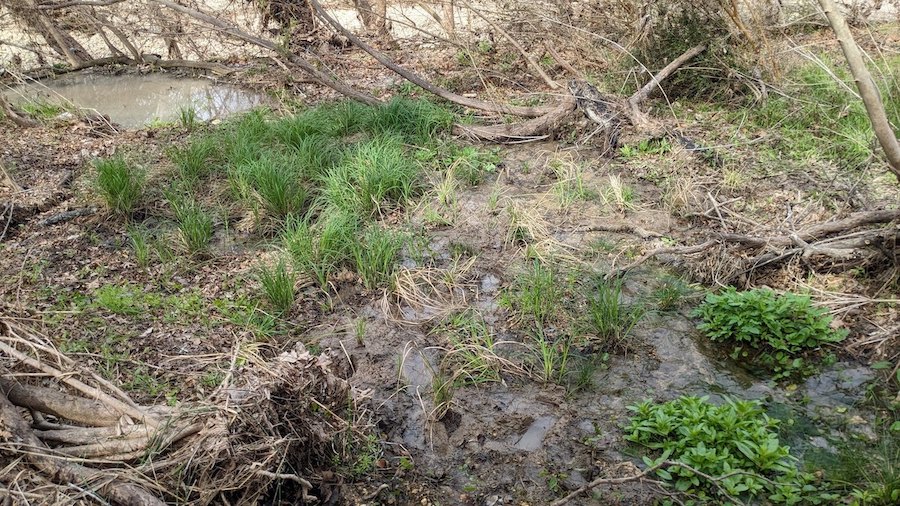
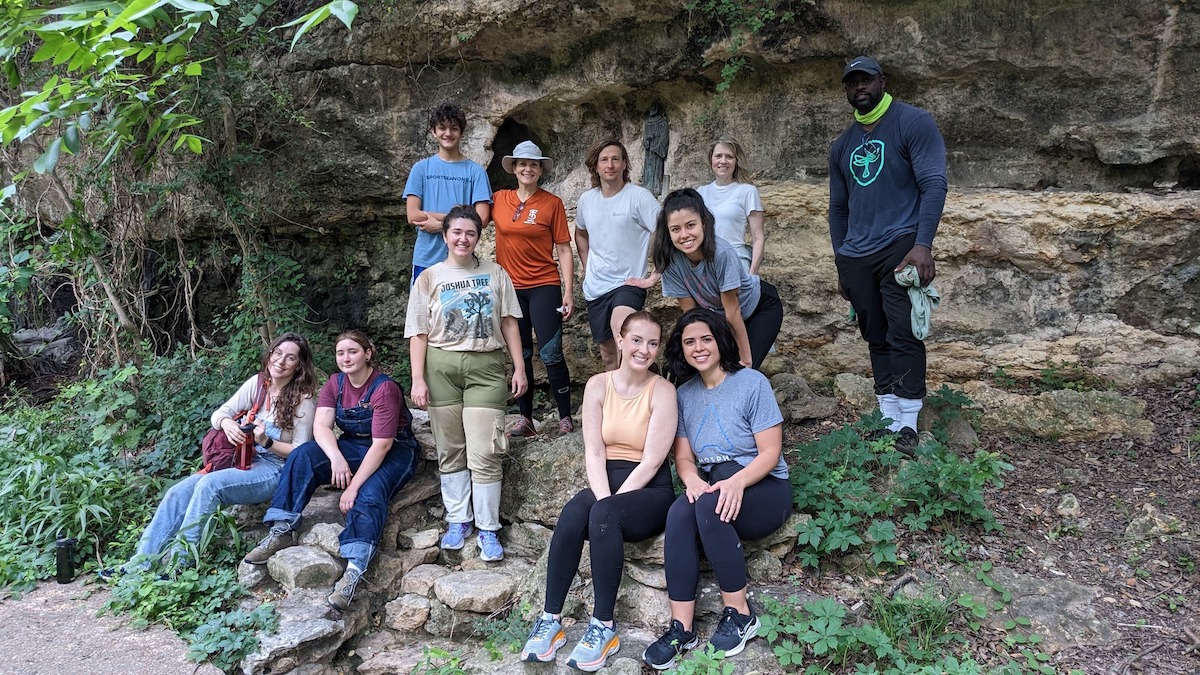
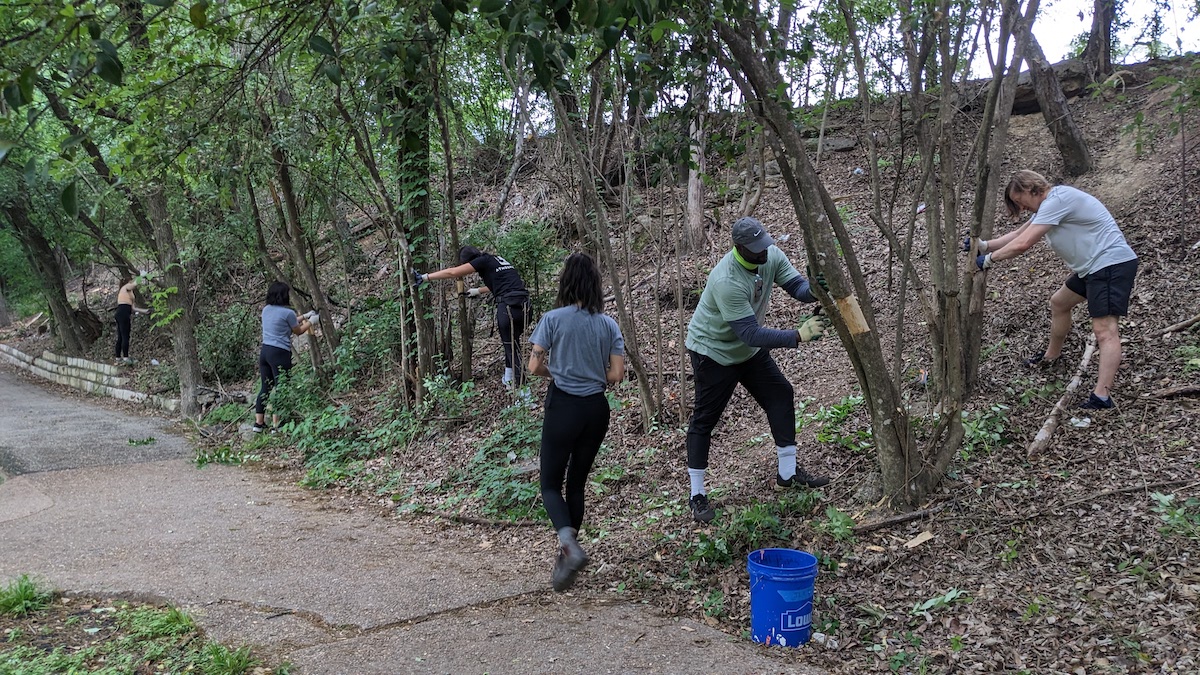
7/30/2023 Girdled invasive ligustrum trees and removed invasive elephant ear.
11/4/2023 Made and dispersed native see balls.
11/30/2023 Planted 65 native tree saplings and shrubs.
9/8/2024 Sowed 30 lbs of native seed, removed invasive elephant ear plants from the spring fed wetland, and planted American beautyberry and cedar sage on the hillside above the creek.
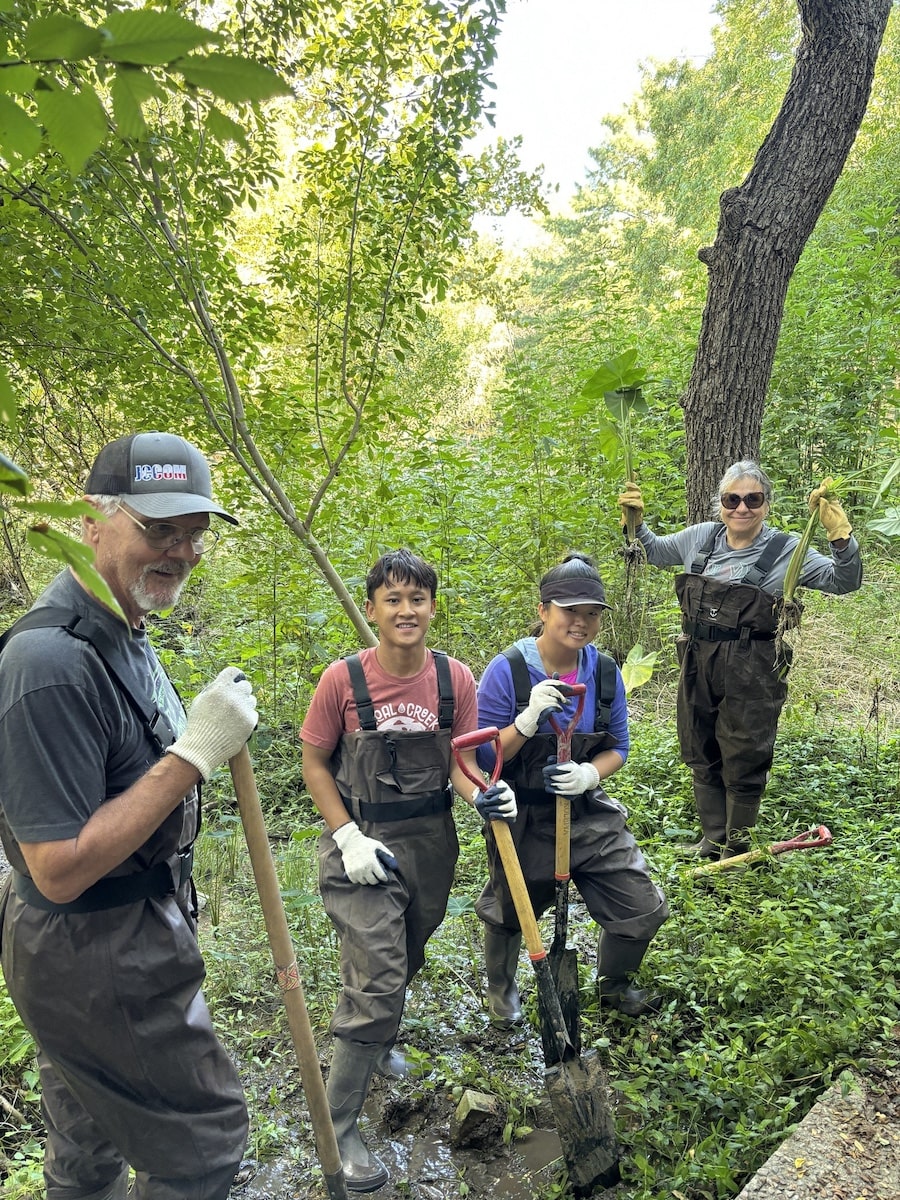
11/2/2024 Planted 70 native tree saplings, including cedar elm, cherry laurel, lacey oak, Mexican buckeye, Mexican plum, red mulberry, Texas persimmon, Texas red oak, and Texas redbud.
11/17/2024 Seeded the new Grow Zone in Seiders Springs, adding biodiversity and habitat. Also planted native grasses in the wetland area and girdled invasive ligustrum.
4/3/2025 Removed invasive elephant ear and little leaf spiderwort from the spring-fed wetland, and planted 38 native plants including Emory sedge, fall obedient plant, and buttonbush. Volunteers even got to witness the unique ebb-and-flow behavior of the southern spring, gushing water for about 5 minutes before retuning to a very small trickle.
5/4/2025 Removed invasive elephant ear, planted 40 native water clover, seeded the riparian buffer and removed 60 pounds of trash from the creek to help improve water quality and ensure Shoal Creek has a healthier and more vibrant ecosystem.
10th Street
In support of the Shoal Creek Watershed Action Plan, Shoal Creek Conservancy is conducting a riparian restoration project north of Duncan Park, near 10th Street.
Efforts & Progress
10/24/2022-10/28/2022 Shoal Creek Conservancy contracted with Texas Conservation Corps to remove invasive giant cane and revegetate bare creek bank with native species, including switchgrass, inland sea oats, maximilian sunflower, Turk’s cap, elbowbush, horseherb, and frogfruit. These plants create a healthy wildlife habitat and assist in stabilizing the streambank. TXCC also constructed a rock barrier to help delineate the walking path from the planting area.
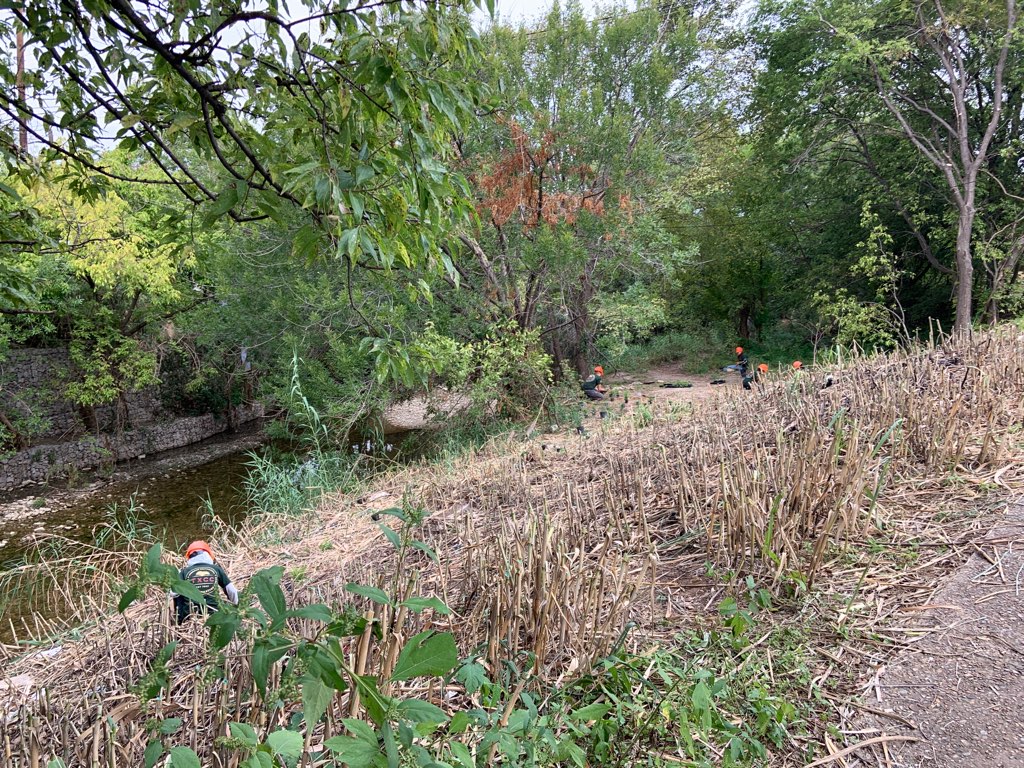
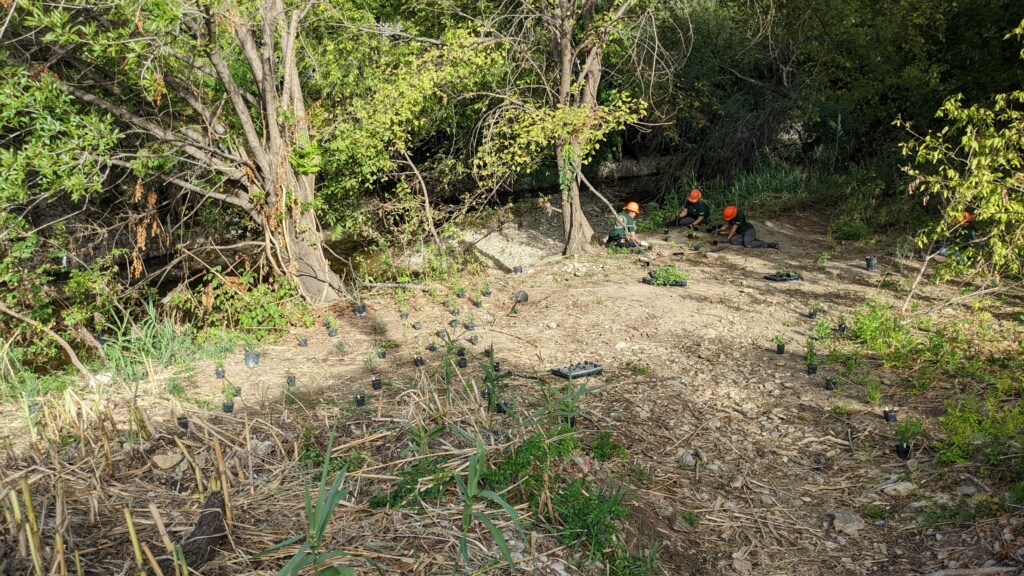
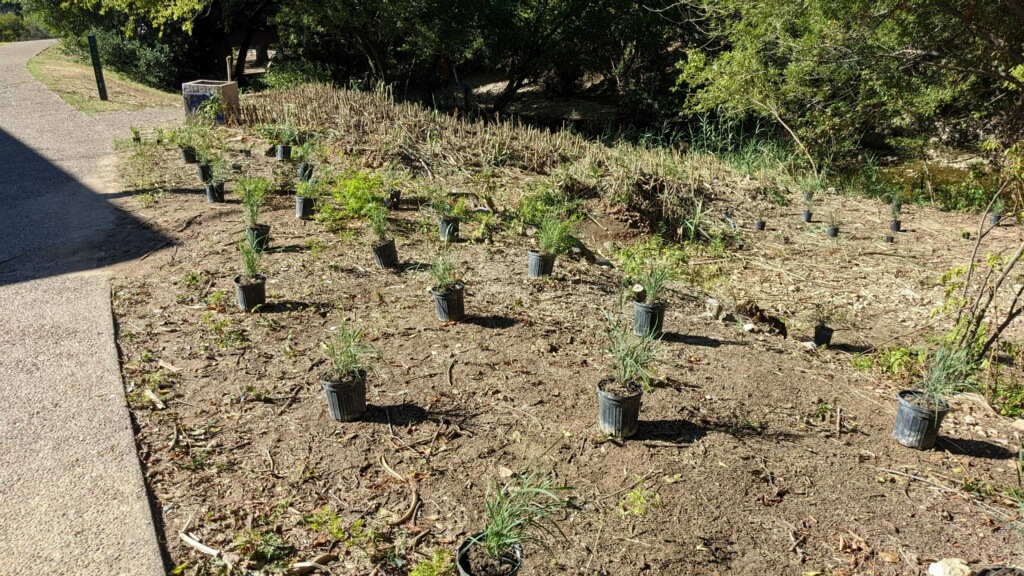
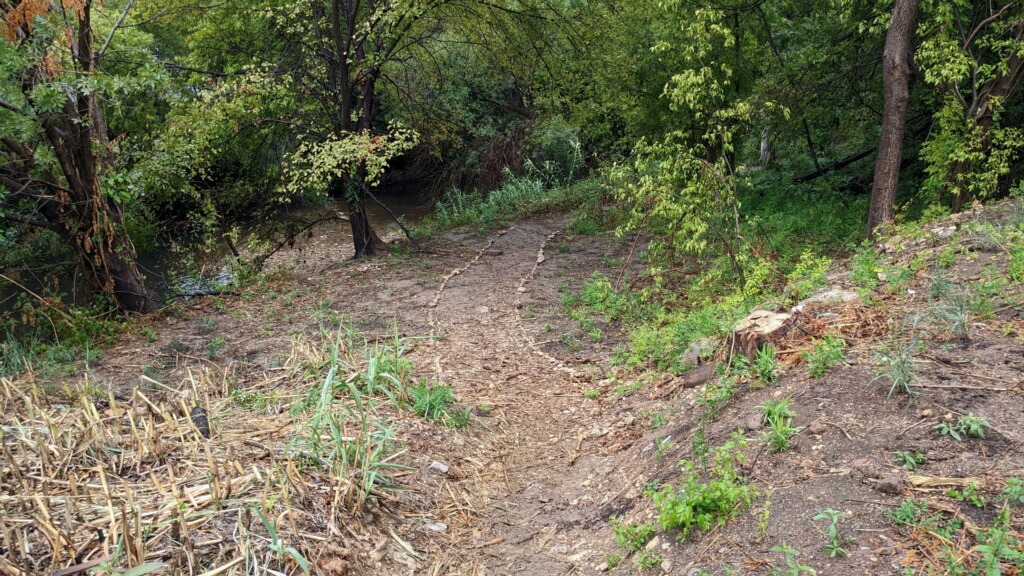

6/26/2023-6/30/2023 Shoal Creek Conservancy contracted with Environmental Survey Consulting (ESC) to manage invasive Arundo. Per Texas Parks & Wildlife, giant reed is a highly invasive, non-native grass with the potential to significantly damage the health of streams and rivers by affecting water quality and quantity, worsening flooding, displacing native plants, destabilizing banks, contributing to erosion, increasing fire risk, and harboring invasive insects. ESC cut and applied aquatic-approved herbicide treatment, as outlined by Austin’s Watershed Protection Department, to large stands of Arundo at the 10th street restoration site.
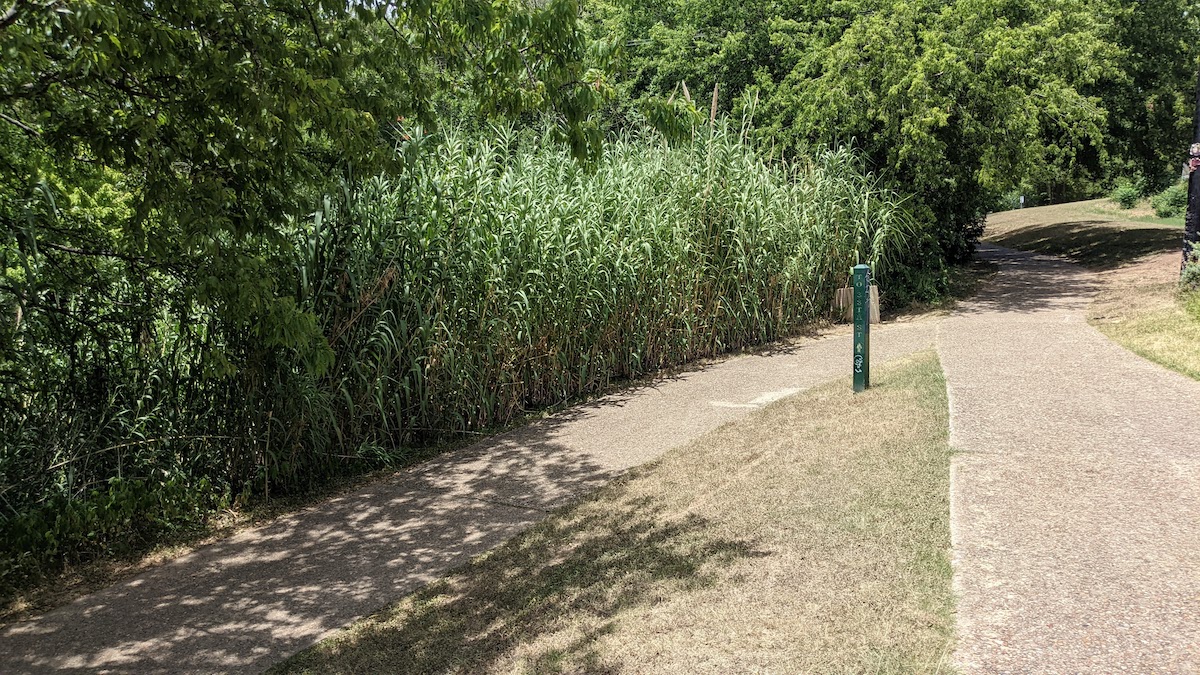
8/16/2024 Shoal Creek Conservancy contracted with Environmental Survey Consulting to re-treat the stands of invasive Arundo, cutting and applying herbicide as done previously.
Gaston Ave & Shoal Creek Blvd
In collaboration with Pease Park Conservancy and the Austin Watershed Protection Department, Shoal Creek Conservancy is assisting in conducting riparian restoration activities in the Gaston Green area of Pease Park near Gaston Avenue and Shoal Creek Blvd. This revegetation work is helping to reclaim space for Shoal Creek’s native ecology in an area where Pease Park Conservancy and Texas Conservation Corps have worked to remove invasive ligustrum trees.
Efforts & Progress
10/14/2022 Spread 25 gallons of native seed and planted native shrubs to improve and expand the riparian buffer along Shoal Creek.
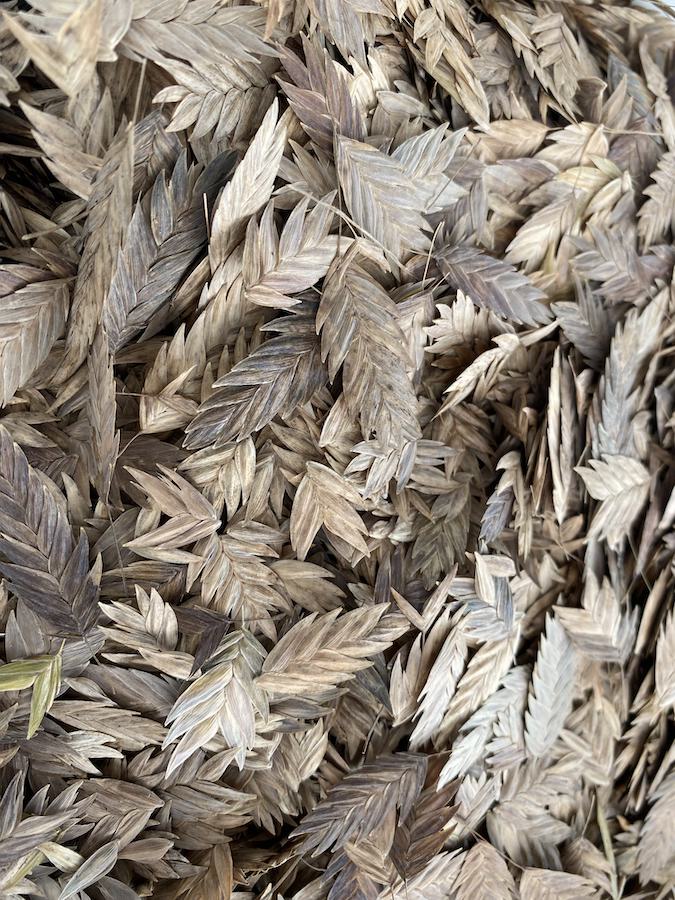
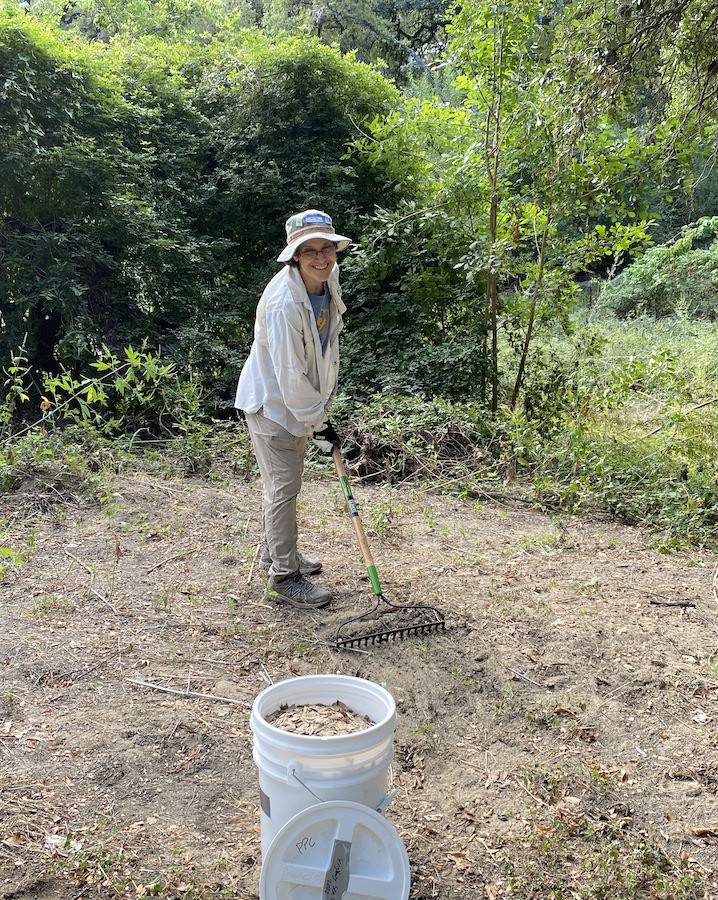
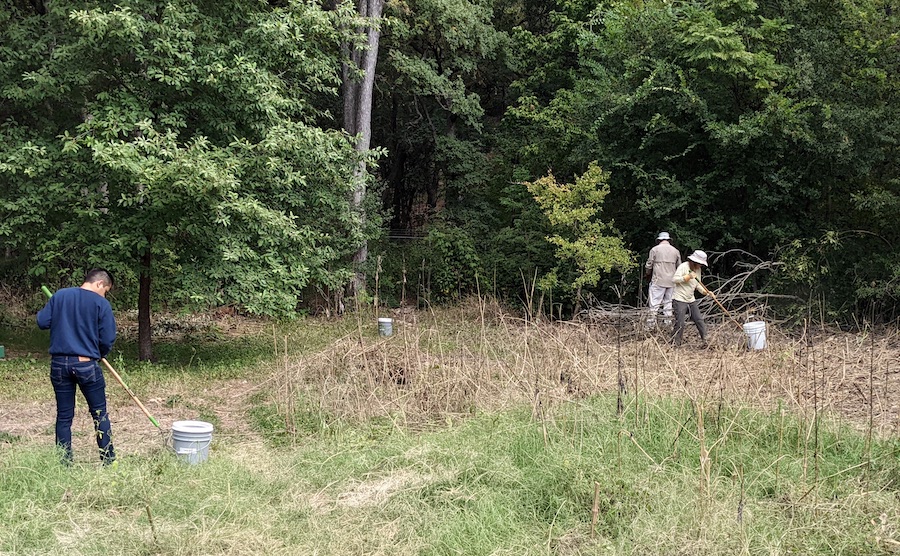
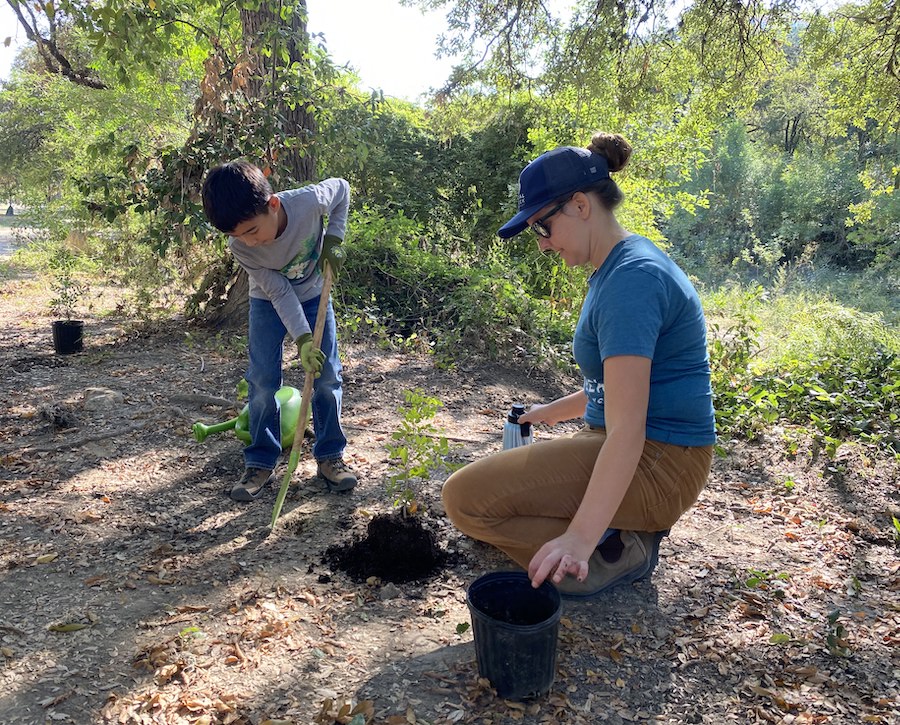
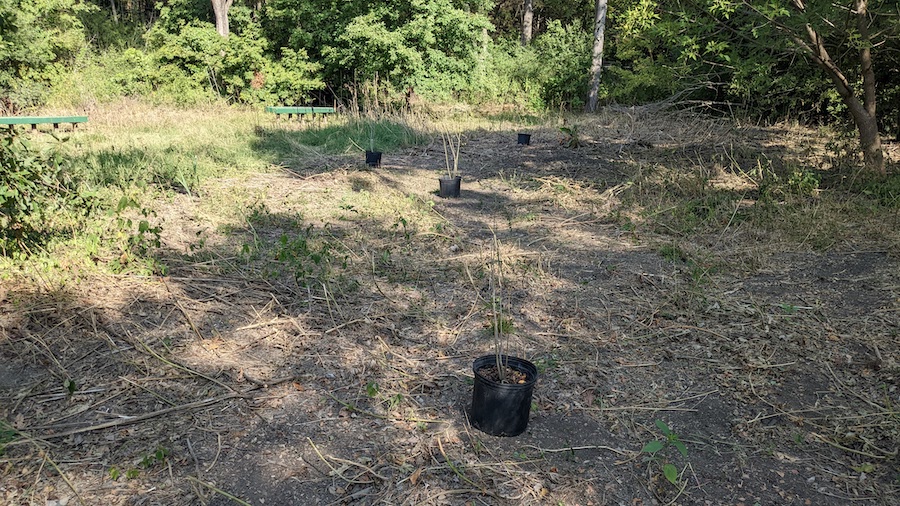
12/3/2022 Planted approximately 85 native plants and grasses to add diversity and resilience to Shoal Creek’s riparian buffer. Species planted included elbow bush, Turk’s cap, switch grass, and American beautyberry.
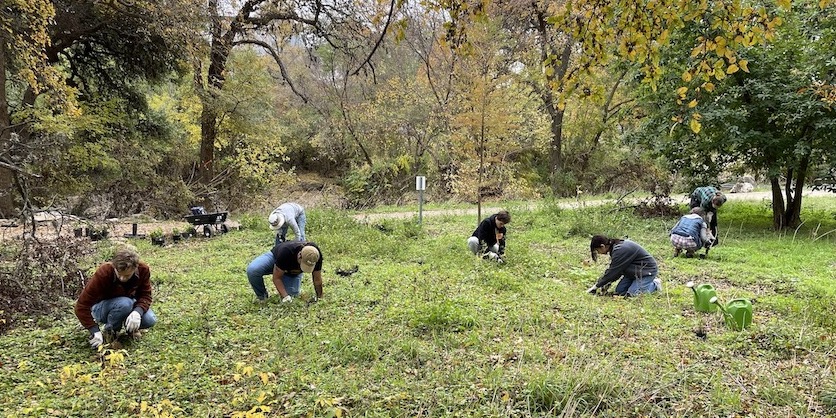
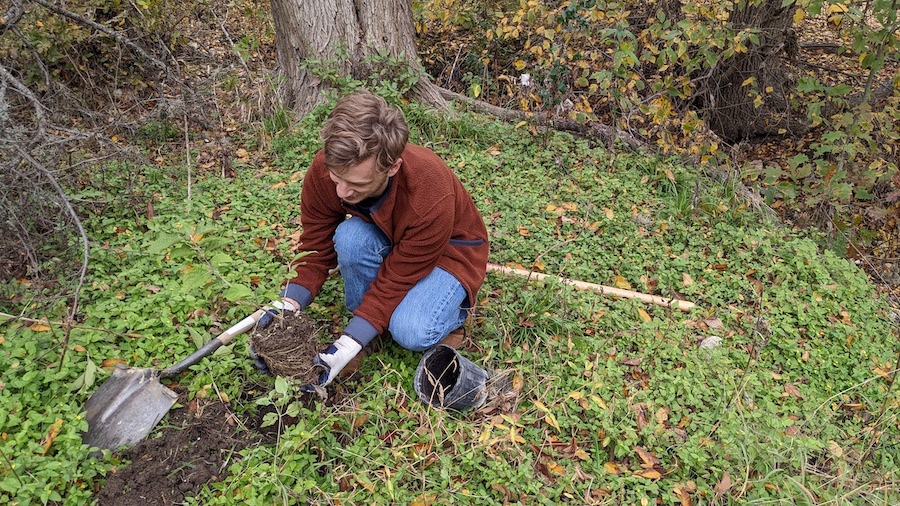
12/16/2022 Planted native grasses and shrubs, including inland sea oats, American beautyberry, elbow bush, coral berry, and Turk’s cap, to revegetate an area on the bank of Shoal Creek.
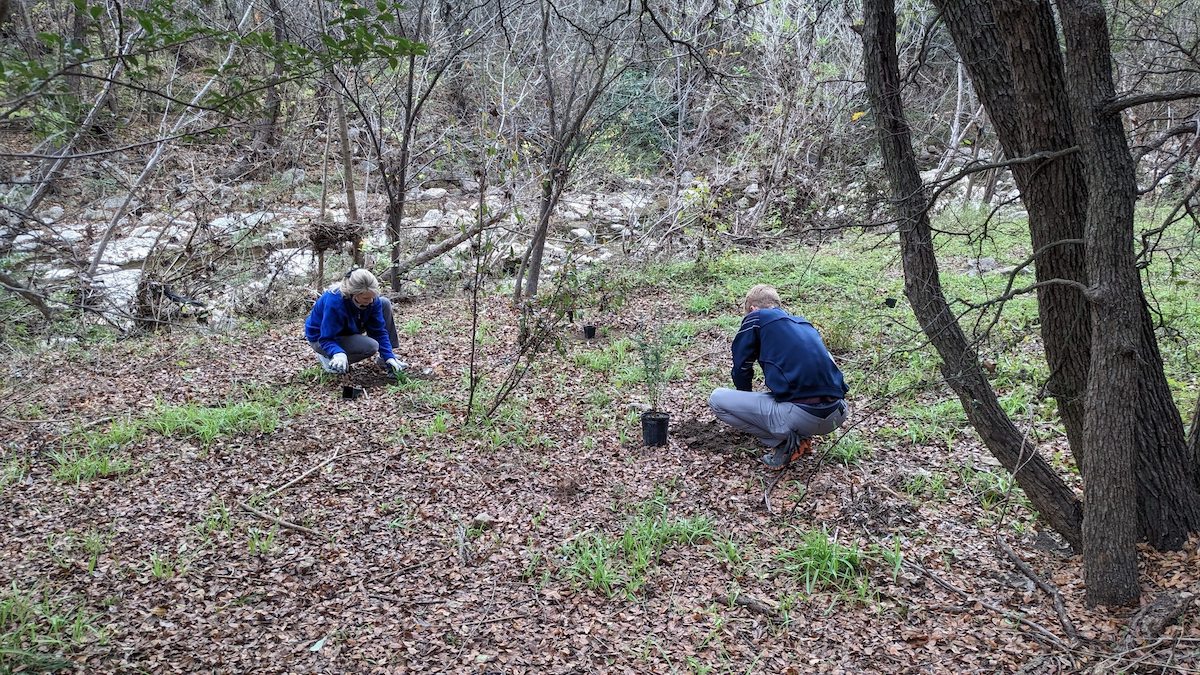
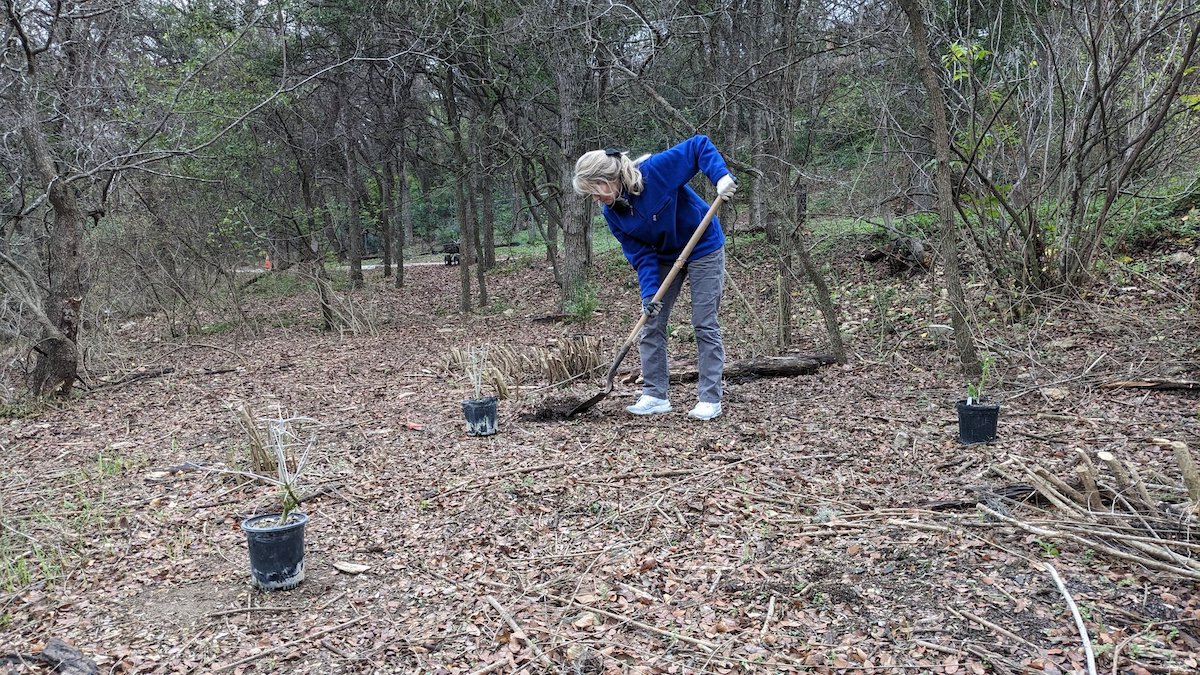
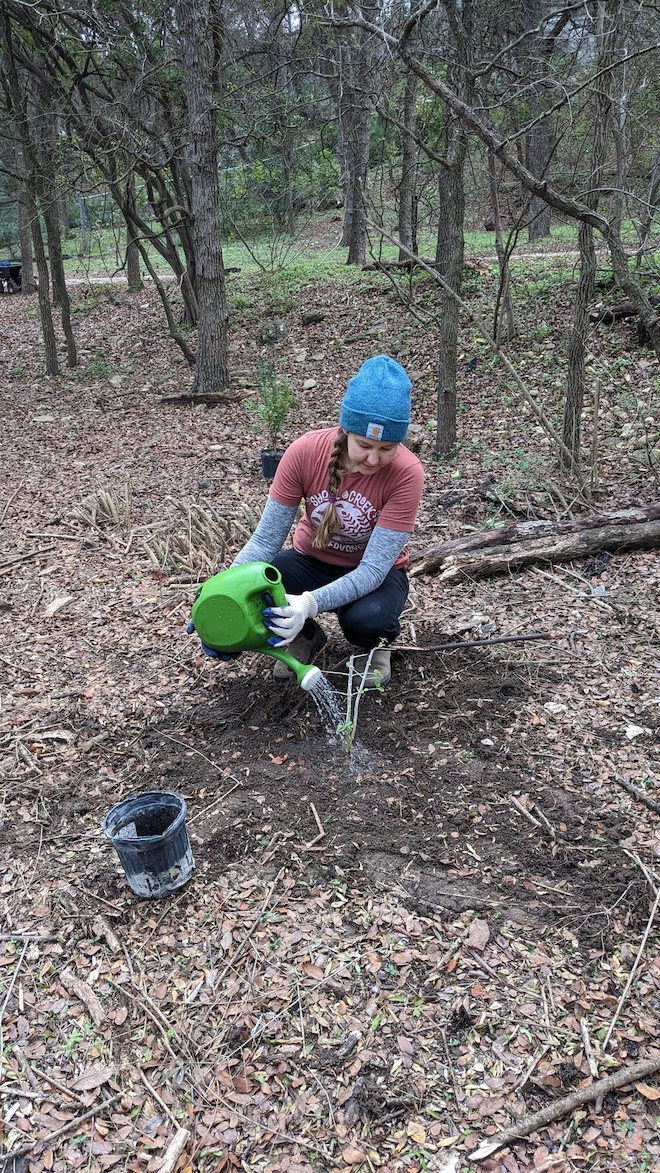
1/27/2023 Planted 40 native shrubs and grasses along Shoal Creek, northeast of Shoal Creek Blvd and Gaston Ave. Then, managed ragweed in the restoration site west of Shoal Creek Blvd and Gaston Ave.
2/10/2023 Ready, Set, Plant! event hosted by TreeFolks where dozens of volunteers planted tree saplings to help restore and rejuvenate a large area in and around the Shoal Creek riparian buffer zone.
4/21/2023 Distributed native seed balls, planted native grasses, and managed invasive ragweed.
9/24/2023 Made and distributed native see balls.
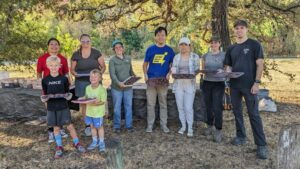
10/20/2023 Planted native bunch grasses and managed invasive giant ragweed.
1/28/2024 Planted native bunch grasses and sowed 70 pounds of native seed.
2/25/2024 Planted 170 native grasses, herbaceous perennials, and shrubs. Chile Pequin, Frogfruit, Horseherb, Inland Sea Oats, American Beautyberry, Big Muhly, Cedar Sage, Fragrant Mist Flower, and Gray Goldenrod were all planted to help expand Shoal Creek’s riparian buffer.
3/10/2024 Collaborative workday with Pease Park Conservancy to plant 124 native plants at Live Oak Meadow (just south of the restoration site near Gaston Green). Planted Switchgrass, Inland Sea Oats, Pigeonberry, Horseherb, and Goldenrod in the riparian buffer of Shoal Creek to help with stormwater runoff filtration, bank stabilization, and plant community diversity within Pease Park, and the greater Shoal Creek watershed.
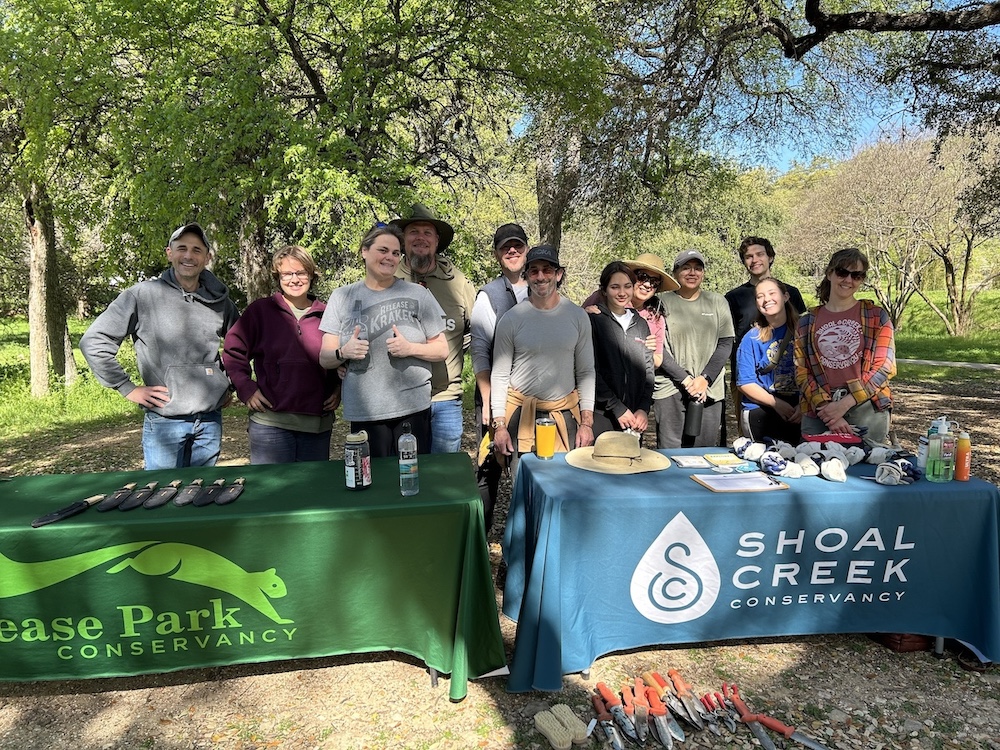
10/6/2024 Volunteers removed invasive ragweed then seeded with native species.
11/7/2024 Volunteers spread native seed in the creek’s riparian zone from Gaston Avenue & Shoal Creek Blvd to 29th Street.
3/6/2025 Volunteers planted 75 native plants in the grow zone near Gaston Ave and Shoal Creek Blvd, including Webberville sedge, inland sea oats, Maximilian sunflower, big muhly and American beautyberry. These plants will help stormwater runoff filtration, bank stabilization, wildlife habitats and more!
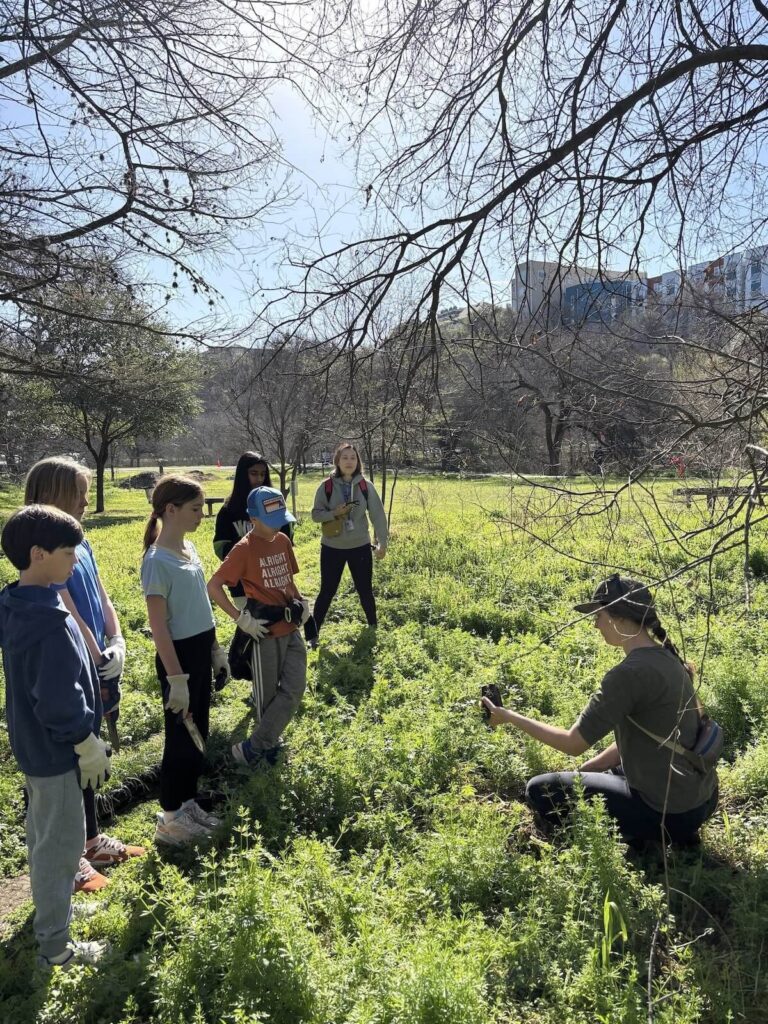
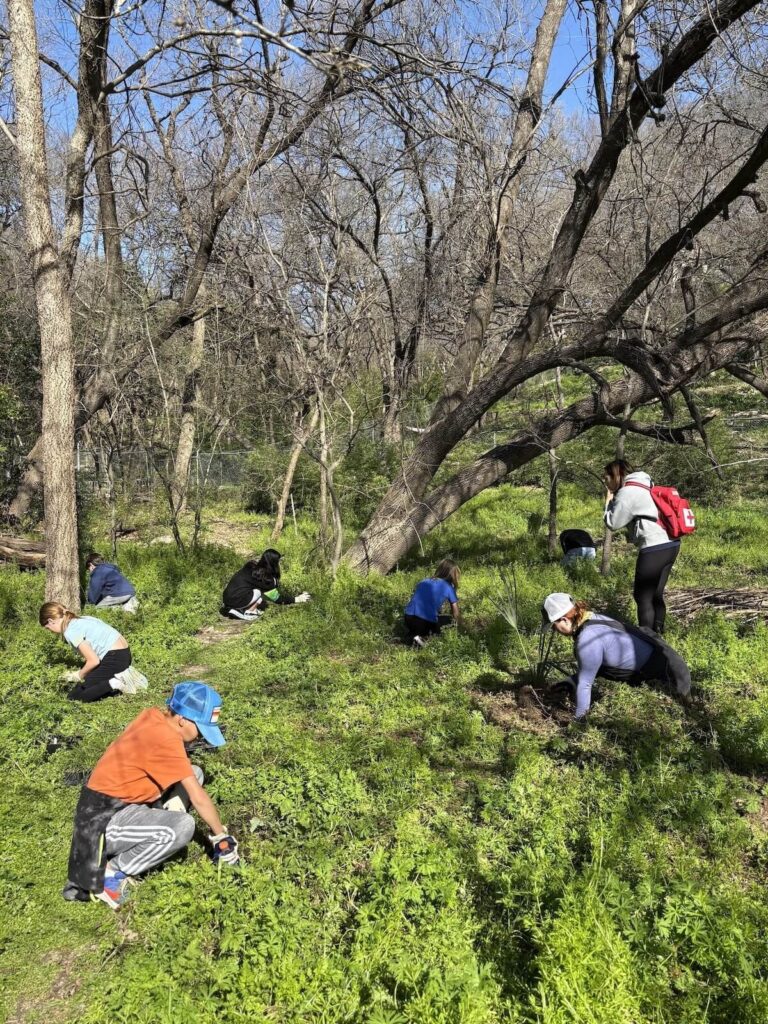
Upper Shoal Creek, Foster Lane to Hwy 183
A line of commercial private properties back up to Shoal Creek along its northern stretch from around Foster Lane up to Hwy 183, near its headwaters. Shoal Creek Conservancy is excited to collaborate with these commercial property owners and work to restore the riparian health of Shoal Creek in this region in order to improve its overall resilience.
Efforts & Progress
3/26/2023 Along the west bank of Shoal Creek at Steck Avenue, volunteers from the North Shoal Creek Neighborhood Association planted about 60 native switchgrass plants in the riparian zone near the creek channel and seeded bare ground in the floodplain to create a native wildflower meadow. Big thanks to KVUE for allowing SCC and NSCNA to add beauty, habitat, and more robust vegetation to the back of their property on Shoal Creek.
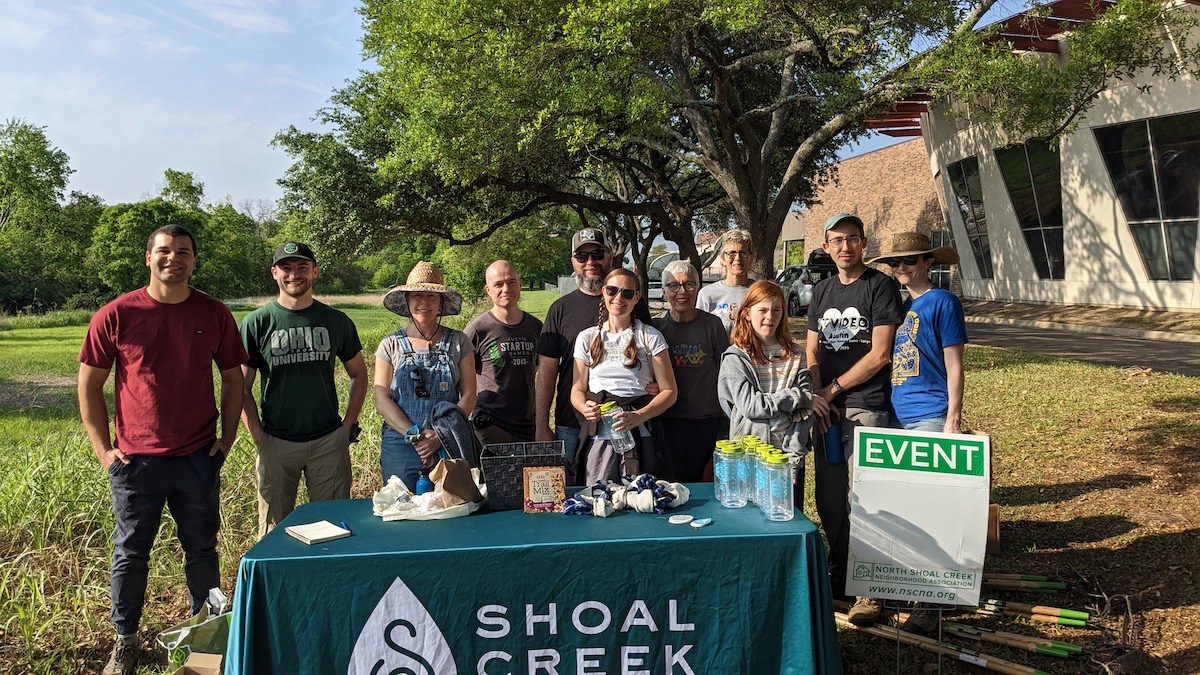
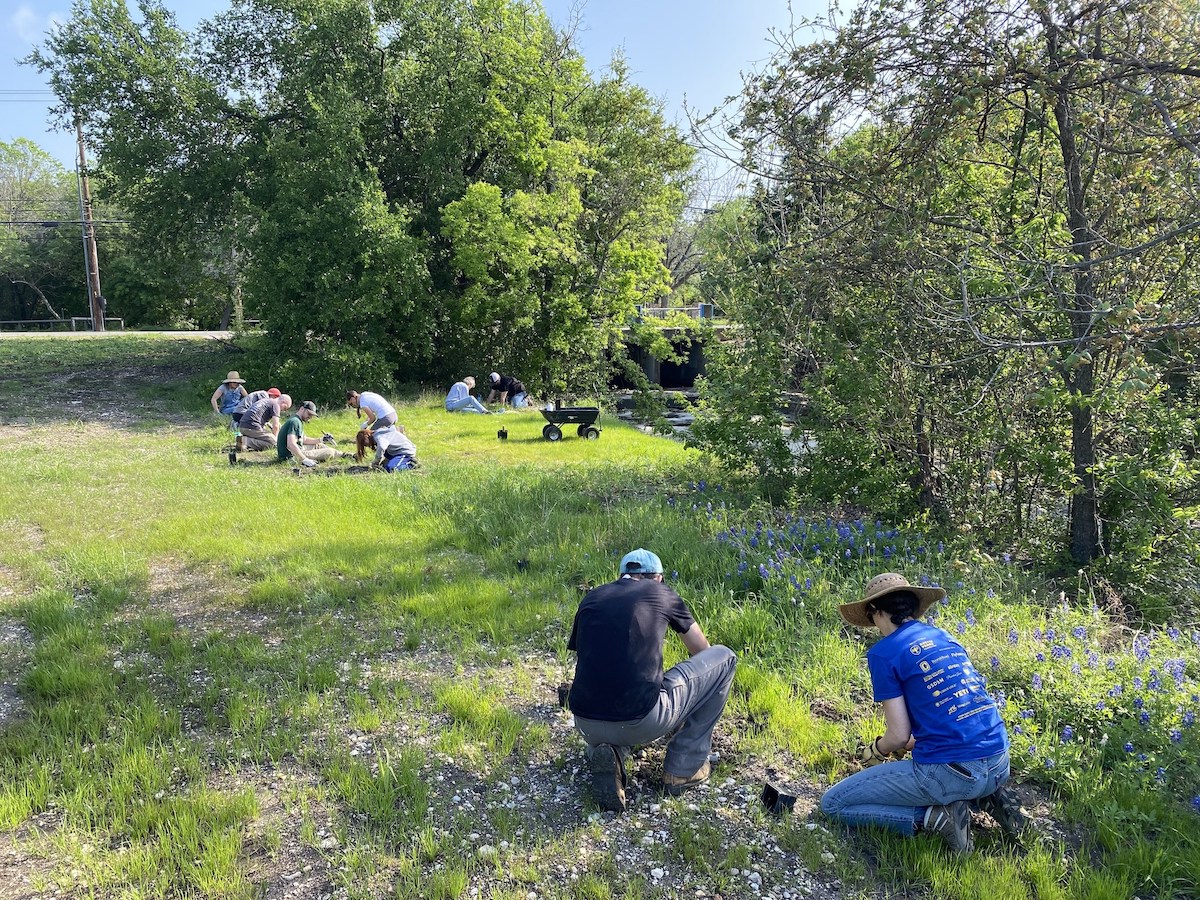
11/12/2023 Sowed wildflower seeds in the riparian zone near Shoal Creek and Steck Avenue.
